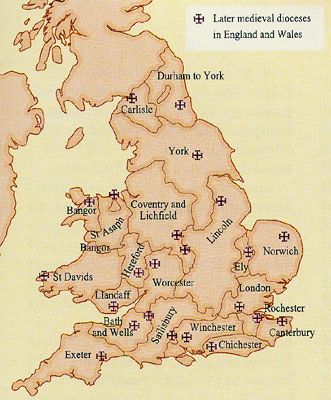Britain, a land steeped in rich ecclesiastical history, is home to a breathtaking array of churches that range from grandiose cathedrals to quaint country chapels. The question of how many churches exist within this island nation invokes curiosity not only about the sheer quantity but also about the multifaceted motivations behind their establishment and the unique significance they hold for the faithful. This exploration will delve into the variety of churches throughout Britain, weaving together threads of historical, cultural, and spiritual significance.
Estimates suggest that there are over 40,000 churches across Britain, with a wide array of architectural styles that span centuries. From the majestic Gothic spires of cathedrals to the rustic charm of stone chapels nestled in the countryside, these houses of worship present a visual narrative of Britain’s evolution in religious practices and community life. The Church of England, the largest Christian denomination in the country, is a significant contributor to this assemblage. However, the landscape of worship extends well beyond Anglican traditions, encompassing a plethora of denominations including Roman Catholicism, Methodism, Baptism, and various other expressions of Christianity.
The sheer number of churches in Britain serves as a canvas upon which the historical tapestry of Christianity is painted. Many of these structures have stood for centuries, bearing witness to monumental events that shaped the nation. Many churches are more than just places for communal worship; they are focal points for local history, embodying stories of societal transformation and resilience. Notably, the Church of St. Mary in Kempley, with its stunning Norman architecture, exemplifies this intersection of faith and history. Here one might observe fine medieval wall paintings that illuminate the spiritual fervor of the time.
One might ponder why Britain, more than many other nations, exhibits such an exuberant variety of ecclesiastical architecture. One plausible explanation lies within the ecclesiology of the Anglican Church, which has historically fostered a decentralized approach to church governance. This has permitted local communities considerable autonomy in establishing worship spaces, tailoring their form and function to fit the spiritual needs of their congregations and the cultural indices of their settings. Furthermore, the Reformation altered the fabric of religious life in Britain, leading to the proliferation of non-conformist communities and the churches that arose from them. Each structure, be it a bustling metropolitan cathedral in London or a serene chapel in the Cotswolds, mirrors the distinctive identity and beliefs of its congregation.
Moreover, the geographic distribution of churches reflects the sociocultural dynamics of the regions in which they are found. Urban centers are often adorned with grand cathedrals that serve as landmarks and symbols of civic pride. St. Paul’s Cathedral in London, with its iconic dome, not only offers a place for worship but also attracts millions as a tourist attraction and a monument to resilience in times of turmoil. In contrast, rural areas, characterized by their tranquil landscapes, often host smaller, charming parish churches. St. Michael’s Church in the quaint village of Withington demonstrates this, offering solace and community in a setting that diminishes the frantic pace of modern life. It is in these spaces that one might find a nuanced form of worship that intertwines with the rhythms of daily rural existence.
Churches also play a significant role in bolstering community spirit. They serve as venues for gatherings, celebrations, and communal support, framing themselves as essential bastions of social life. The tradition of seasonal festivals—harvest festivals, Christmas services, and Easter vigils—exemplifies the vital connection between faith and community cohesion. The participation of diverse age groups in these events fosters intergenerational dialogue and supports the transmission of faith as a living tradition. These gatherings often invoke a sense of belonging that transcends denominational lines, uniting individuals under the commonality of shared beliefs and familial ties.
As societal values evolve, many churches have taken on innovative roles to remain relevant. Some engage in social justice initiatives, advocating for issues such as homelessness, mental health, and inequality. Others embrace interfaith dialogue, cultivating relationships with religious groups from other traditions in a spirit of cooperation and mutual respect. This adaptability promises the survival of churches as influential entities within contemporary society. For instance, churches that have become community centers for action against climate change exemplify a proactive response to globalization and modern challenges, encouraging congregants to embody a faith that actively interacts with worldly concerns.
In conclusion, the rich tapestry of churches in Britain is much more than a mere enumeration of buildings; it reflects the confluence of faith, history, culture, and community. Each church offers a distinct narrative of the British experience with Christianity, eliciting fascination that stems from how these sacred spaces have played vital roles throughout the ages. Whether one finds themselves in the hallowed halls of a cathedral or in the serene embrace of a country chapel, each visit provides an opportunity to connect not only with the divine but also with the heartbeat of the community that surrounds these venerable structures. Thus, the abundance of churches in Britain invites reflection upon the enduring power of faith and its capacity to shape, sustain, and inspire individuals and communities alike.



